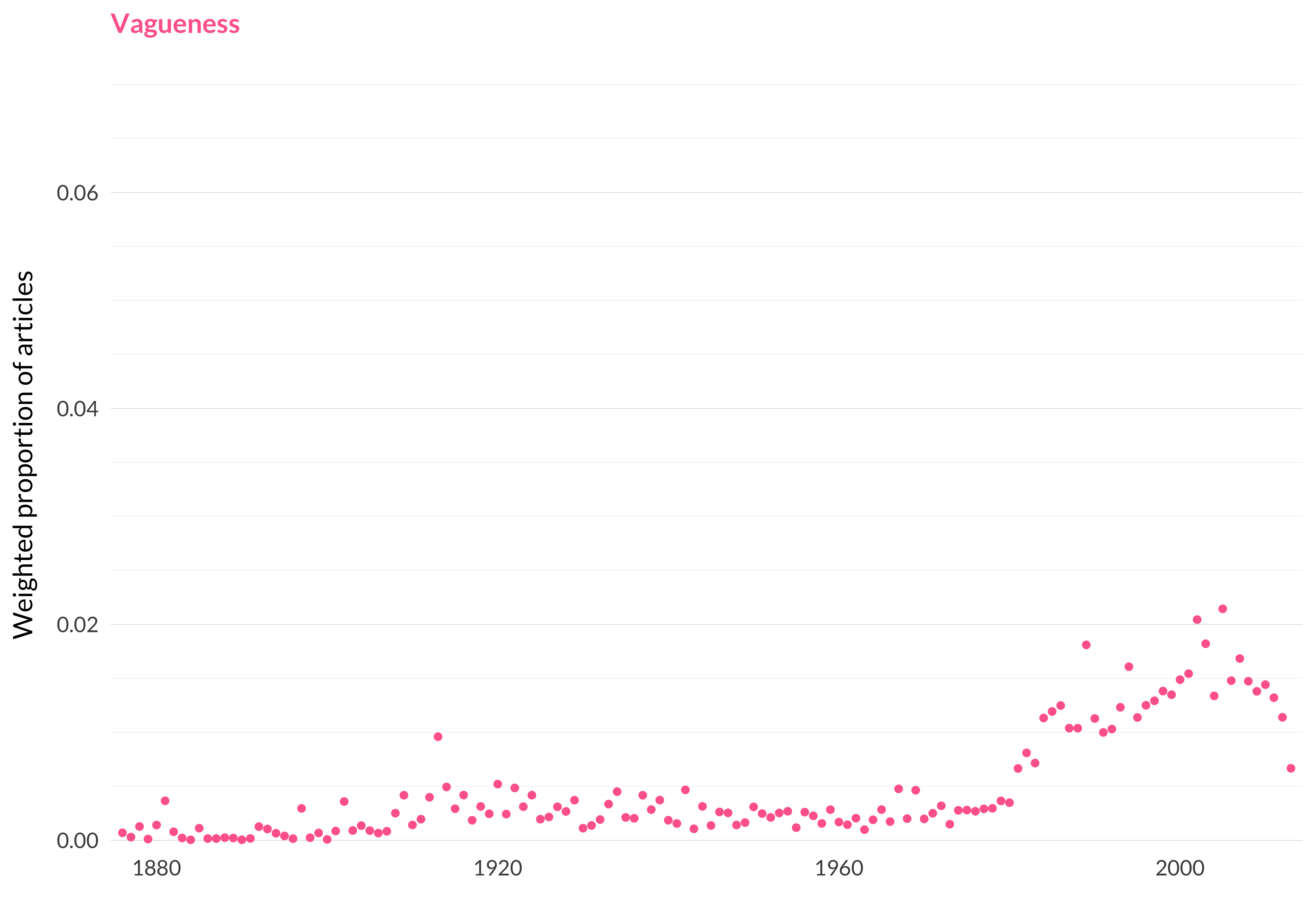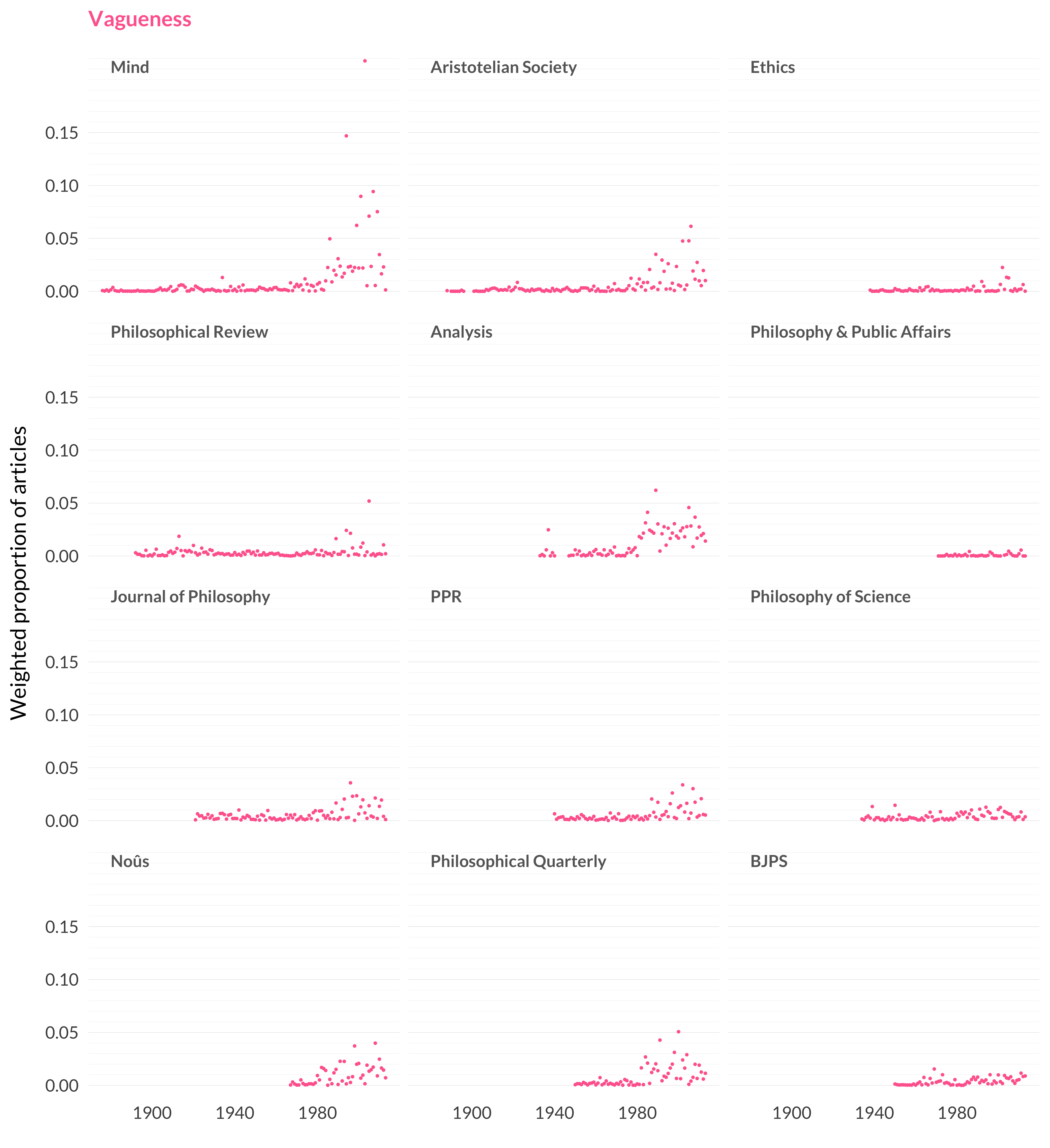2.86 Vagueness
Category: Logic and Mathematics
Keywords: vagueness, sorites, truthmaker, realist, realists, borderline, indeterminate, realism, vague, definitely, wright, anti, blackburn, indeterminacy, tall
Number of Articles: 237
Percentage of Total: 0.7%
Rank: 67th
Weighted Number of Articles: 220.6
Percentage of Total: 0.7%
Rank: 76th
Mean Publication Year: 1996.5
Weighted Mean Publication Year: 1988.9
Median Publication Year: 1999
Modal Publication Year: 2005
Topic with Most Overlap: Truth (0.062)
Topic this Overlaps Most With: Theories and Realism (0.0283)
Topic with Least Overlap: Psychology (7e-05)
Topic this Overlaps Least With: Duties (3e-04)

Figure 2.198: Vagueness.

Figure 2.199: Vagueness articles in each journal.
Comments
Stop me if you think you’ve heard this one before. This is a topic that Bertrand Russell wrote an important paper on many years ago. But that paper made very little impact on the journals at the time, and it is barely visible on the graphs.
Vagueness was a huge topic in the 1990s and early 2000s, driven first by Timothy Williamson’s book Vagueness, and then by the work coming out of the Arché research center at St Andrews. As someone working in that field, it felt like it faded a bit after that time, and the dip in the graph at the very end supports that. I thought there were still plenty of interesting questions here to discuss, but the field seemed to move on.
This was a tricky topic to categorize. I felt it should be philosophy of language, but I really didn’t want to go off my judgments in a field I work in. I’ll talk a bit more about this in chapter 5, but it turned out the model itself had fairly strong views about this topic, and that’s why it is in logic and mathematics.
There are some metaphysics papers scattered in here as well. Some of these are papers on metaphysical vagueness, though since logic journals publish papers on metaphysical vagueness, I don’t feel too bad classifying them as logic and mathematics. But the model also included the small early 2000s topic of truthmakers in here as well. I’m not entirely sure why it did that, other than the fact that the boom in truthmaker discussions happens at roughly the same time as the boom in vagueness discussions, and both of them owe a lot to work by Russell that hadn’t previously troubled the journals. But the truthmaker papers make up a small portion of the topic, and it’s easiest to think of this as just being the vagueness papers.